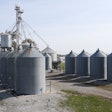
These days it seems that more often than not feed manufacturers are finding themselves in the midst of a conversation that seems to have begun without them. The topic? Sustainability.
“Sustainability didn’t become a buzzword until the last five years or so,” said David Fairfield, vice president for feed services at the National Grain and Feed Association. Yet Fairfield believes the feed industry has always epitomized the ideals of the sustainability movement by using energy and natural resources efficiently and finding uses for products that would otherwise be considered waste.
How can you convey that message to an unbelieving and distrustful public?
“Start with the truth, because it’s going to come out eventually” is an adage many stalwart livestock producers live by, and its good advice when discussing sustainability issues. Here are some facts about the three top issues under the sustainability umbrella.
Greenhouse gases
Greenhouse gases and their impact on global warming continue to be a “hot” topic. Some consumers are concerned primarily with the amount of methane released by cows themselves; others worry that modern agricultural practices rely too much on fossil fuels.
Critics say agriculture is responsible for an estimated 14 percent of the world’s greenhouse gases. Methane, which is 23 times more potent than carbon dioxide, is produced daily by all ruminants, but dairy cows draw the most ire. Statistics vary wildly about the amount of methane produced by cows ranging from 26 to 132 gallons per dairy cow per day. In comparison, experts say one car releases 26 to 52 gallons of pollution per day.
The feed industry has tried to blunt the criticism by identifying ingredients that encourage bacteria in the rumen to make less methane while making more energy available to the animal. Still, the Food and Agriculture Organization of the United Nations is predicting a 60 percent increase in agricultural methane output by 2030.
Need for research
The questions about methane are why more research is needed to determine how much methane cows are actually emitting. Researchers at the University of California-Davis are leading those efforts by having two cows at a time breathe into specially-made clear, plastic boxes. The team is also looking at the effect various additives on the amount of methane exhaled. The results are being used to create a database of greenhouse gas emission factors for animal feed.
But Frank Mitloehner, the UC Cooperative Extension specialist who is leading the effort, wants to know more. Critics of livestock production also question the amount of fuel used to produce feed fed to livestock, manufacture dairy and meat products, and ultimately deliver those products to grocery shelves. What is the carbon footprint of a gallon of milk? Mitloehner hopes to have an answer soon. “We need good data to understand the true impact of agriculture on the environment.”
Much of the carbon footprint data associated with meat and dairy production is derived from life-cycle assessment models that begin counting the impact when mineral fertilizers are manufactured. The Food and Agriculture Organization of the United Nations estimates that more than half the energy expended during livestock production is for feed production.
Clean water and air
Other consumers are more concerned with protecting water and soil quality from contamination from livestock waste. To address those concerns, feed manufacturers are looking at alternative feed ingredients to reduce the amount of nitrogen or phosphorus in manure or effluent. Trout producers in the U.S., for example, have been working with plant breeders to develop low-phytate feed barleys. Feeding these barleys to trout that have been selected to do well on plant-based diets reduces the amount of phosphorus in fish effluent. Another benefit is that it reduces the amount of fish meal used in the diet.
Undigested protein in a poultry diet ends up in manure, which is rapidly converted to ammonia, nitrate and nitrous oxide. Ammonia emissions into the atmosphere cause water acidification or acid rain. Nitrate leaches into groundwater, putting drinking water sources at risk. Nitrous—along with methane and carbon dioxide—contributes to global warming. Research indicates that feeding particular enzymes can increase amino acid digestibility by 3 to 8 percent, which allows producers to feed less protein, primarily in the form of soybean meal. Feeding less soybean meal, one of the most expensive ingredients in most rations, also helps the producer’s bottom line.
Fishmeal and overfishing
Aquaculture producers have been addressing sustainability issues since the 1970s when concerns that the world’s fisheries were being depleted first surfaced. Early aquaculture feeds utilized fish processing waste to meet the high fish meal and fish oil requirements, but this resource is now considered fully exploited. As a result, consumer demand is driving both aquaculture producers and aquaculture feed manufacturers to find alternative feed sources that are sustainable.
Ecolabeling of aquaculture products is quickly gaining hold around the world, and those efforts include best aquaculture practices for aqua feed mills. The Global Aquaculture Association has developed Best Aquaculture Practices, a building block approach to ecolabeling that includes one star if the processing plant is following sustainability protocol, two stars if the farm does also, three stars if the hatchery does and four stars if the feed mill does.
Ken Corpron, Asia-Pacific coordinator for Best Aquaculture Practices, said developing sustainability criteria for feed mills was difficult because of fish meal concerns. Under the Best Aquaculture Practices guidelines, feed mills must source half of their fish meal from certified sources by 2015. Participating feed mills must also follow specific protocol for producing aqua feeds and pass a third party certification. “This is not an organic standard, but we want to make sure medicated feed does not cross contaminate non-medicated feed,” he said.
Importance of traceability
Traceability from the processing plant all the way back to the feed mill is another critical component of the Best Aquaculture Practices program. Five feed mills are participating in the program. As of March 2012, 831,000 metric tons of global aquaculture production had achieved a one star rating with another 308,000 metric tons achieving two stars in 17 countries.
Standards governing feed production, animal welfare, food safety and labor relations are reviewed at least every three years. “One of the strong points with Best Aquaculture Practices is that the people involved with the standards are actively involved with aquaculture, so the standards are not from out in left field,” Corpron said.
That’s different than the life-cycle models used to determine the livestock industry’s impact on the environment. Livestock producers would like to see more standardization between models so that results can be more readily compared. Improved modeling techniques to ensure valid data is obtained would give producers more confidence in the results.
Economic sustainability
Sustainability doesn’t just refer to environmental issues. Feed manufacturers know that unless their customers are economically sustainable, they won’t be in business. This point brings Fairfield back to his premise that the feed industry has always been sustainable. By recycling byproducts that were otherwise destined for disposal as waste into feed ingredients, many processing plants in rural areas have been more profitable and have given producers more value-added opportunities for selling agricultural products.
“Classically, the feed industry evolved because of byproducts,” he said. “Feed manufacturers take products that are available, nutritious, and wholesome and use them to further food production in another way.” Fairfield believes the marketplace will eventually help sort out the sustainability debate. With the global population expected to reach 9.5 billion by 2050, many experts believe food production must increase by 40 percent to meet the growing demand. “Modern ag practices are the most sustainable way to produce the food we will need,” he said.

















